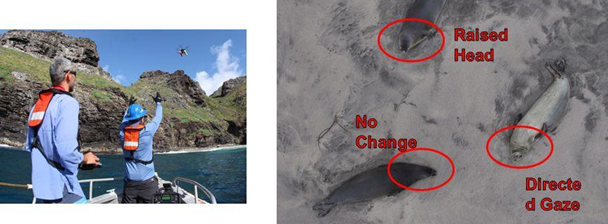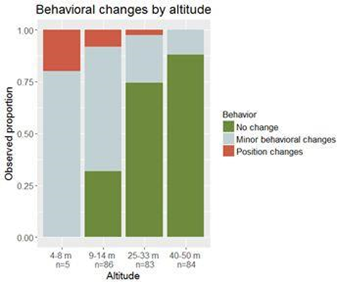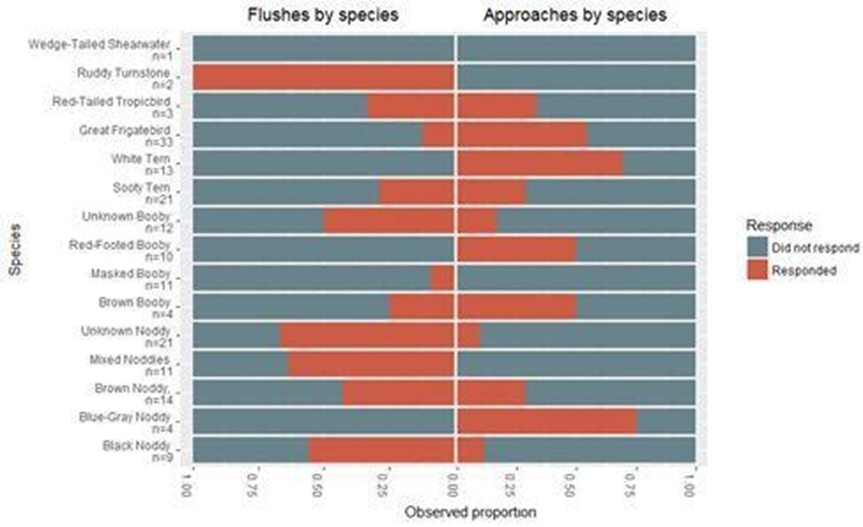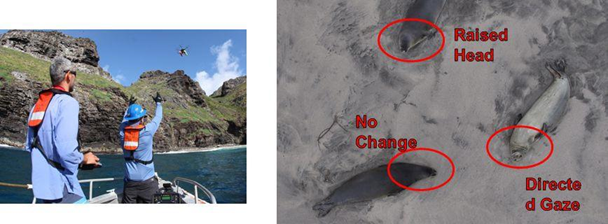ARTICLE AND FIGURES PROVIDED BY JESSICA BOHLANDER (PIFSC)
Principal Investigator: Jessica Bohlander
Co-Investigators: Anne Harbarger (NOAA Hollings Scholar), Mark Sullivan (JIMAR)
National Oceanic and Atmospheric Administration
National Marine Fisheries Service Pacific Islands Fisheries Science Center
Protected Species Division and Joint Institute for Marine and Atmospheric Research (JIMAR)
In an effort to determine whether use of a UAS APH-22 hexacopter would cause disturbance to endangered Hawaiian monk seals or seabirds, the team at the Pacific Islands Fisheries Science Center’s Hawaiian Monk Seal Research Program embarked on an exploratory study in the Northwestern Hawaiian Islands (NWHI).
The APH-22 was hand-launched from a small boat or from shore and flown at altitudes of roughly 50 meters, 30 meters, or 10 meters (Figure 1). Seal behaviors were recorded before each flight and while the APH-22 was being operated at each altitude. Bird behaviors were recorded before flights, during the launch, during the flights, and during the landing to assess changes in behavior at different flight stages. Seal disturbance was assessed by changes in body position or vocalization as a result of the APH-22 proximity.

It was found that the UAS caused minimal disturbance to seals and birds. Seal behaviors changed more during low altitude flights and 81% of seals showed no behavioral change during flights over 25 meters (Figure 2). A raised head was the most common response for seals.
Response by birds to the APH-22 varied by bird species (Figure 3). Ruddy turnstones and noddies (brown and black) flushed – or flew away suddenly – the most frequently. Frigate birds, white terns and blue-gray noddies were most likely to approach the APH-22 during flight. Birds that flushed due to the APH-22 returned to the beach quickly and no birds made contact with the APH-22 during flight.




Based on these data, minimal disturbance is caused to seals and birds by the APH-22 which supports safe use for protected species research in the NWHI. This study may also guide us in best practices for flying around monk seals and sea birds including flight altitudes and distances to minimize disturbance.

